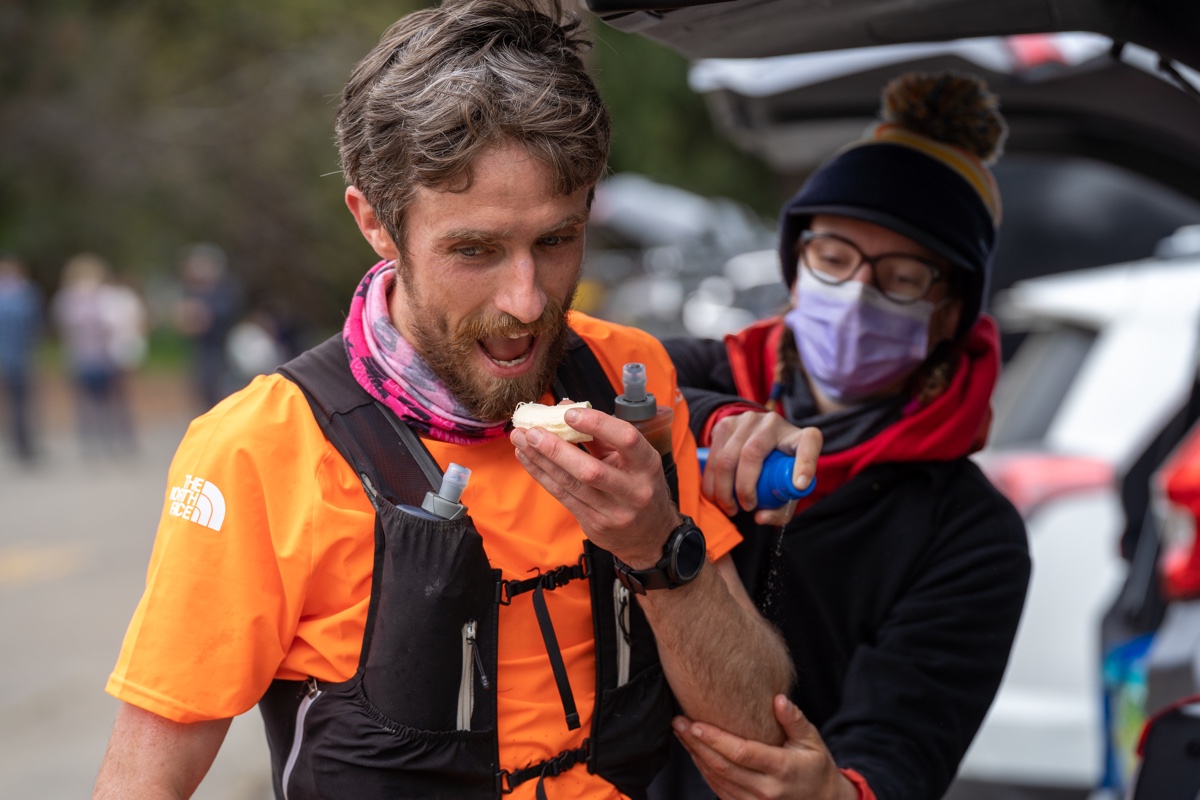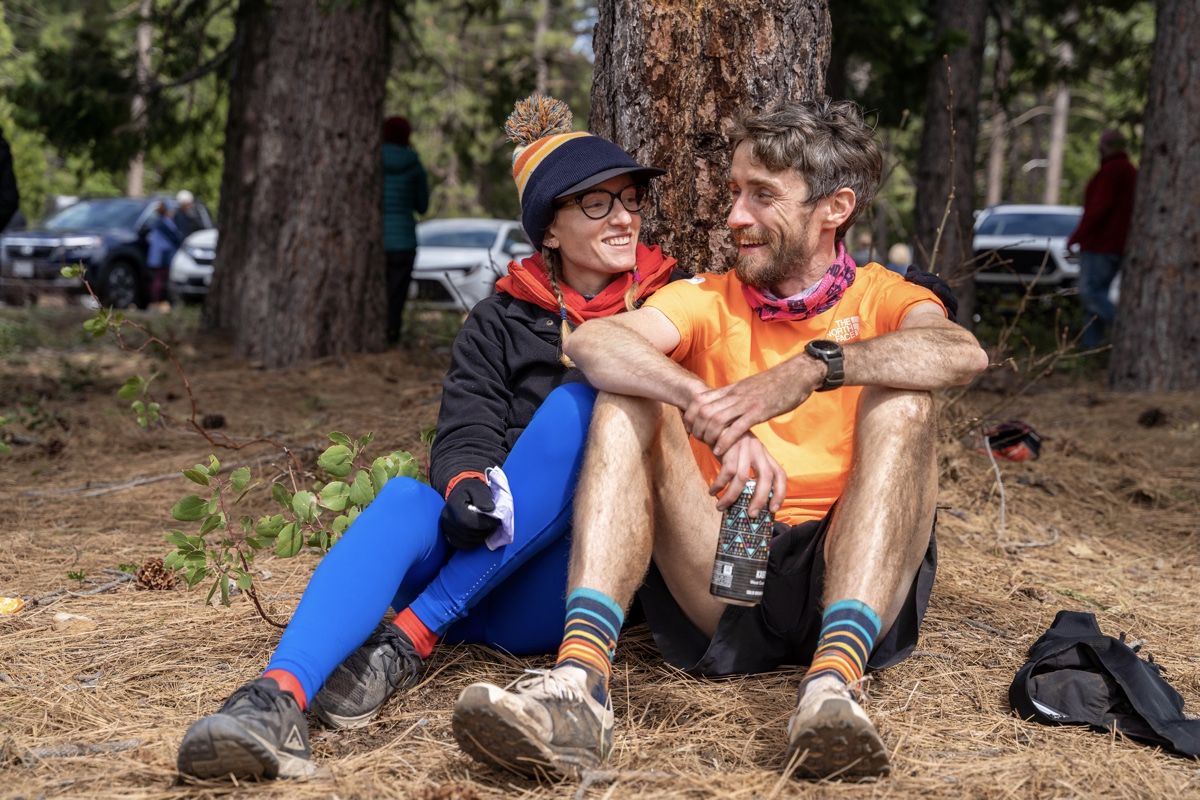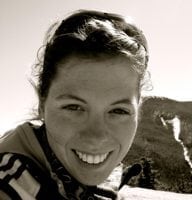We are back with a new, summer edition of Running on Science’s mythbusting approach to bringing science to the running community. In this fourth edition of “Fact or Fiction,” we examine three more discussion topics that you might hear whispered in running shops or murmured at group runs. We utilize current scientific literature and understanding to see if these “factoids” are indeed fact, fiction, or something in between.
Fact or Fiction: “Sunscreen affects your ability to sweat.”
One of my least favorite things about sunscreen is that I feel like I’m wearing an extra layer of clothes as I head out into the heat of summer. But is that more than a sensation? There are many different tactics for mitigating heat out on the trail and roads, including avoiding a sunburn, which is so very dehydrating. One of our easiest-to-reach-for tools for sun protection and skin health is sunscreen (1). Sunscreen applied to the skin creates a film designed to act like a sponge and in most cases to sit on our skin’s surface and absorb ultraviolet (UV) light so that it cannot penetrate the layers of your skin and create sunburns. But what happens when these sunscreens are also water- or sweat-resistant? Sunscreen that is labeled water-resistant (often in sport sunscreens) is required to stand up to 40 to 80 minutes of water immersion, and it does this by being hydrophobic, meaning it repels water (1). There was initially a lot of concern that this hydrophobic sunscreen and the film it leaves on your skin’s surface would result in skin being less breathable.

Paddy O’Leary gets the assist in applying sunscreen during the 2021 Canyons 100k. Image: Tony DePascale
Why is sweat so important? If you remember back to our article on heat acclimation, our most effective means of thermoregulating is by utilizing evaporative cooling. Sweat is your body’s evaporative-cooling mechanism, wherein your sweat turns into its gaseous form by evaporating off your skin’s surface into the environment around you, pulling heat with it. So you can imagine if sunscreen is impairing your ability to produce sweat or evaporate that sweat from your skin, it might impair your ability to thermoregulate properly.
But what does the science say? There have been a handful of studies with more on the way looking at sunscreen and its effects on thermoregulation, specifically during exercise in warm, hot environments, and the news is generally good—and dermatologist approved. In studies evaluating sweat rate and core temperature, they found no difference when sunscreen was applied (1, 3). Great news! We should note that in one study they found that while sweat production was not reduced, there was a slight reduction in evaporation, likely due to increased sweat runoff from the skin, but not to a degree that influenced thermoregulation (2).
There is one piece of the puzzle we do not yet understand, and that is the difference between chemical- and mineral-based sunscreens. Chemical sunscreen contains carbon-based compounds that create chemical reactions with UV rays to act as a sponge absorbing the UV rays. Mineral sunscreens contain active mineral ingredients like zinc oxide, and sit on top of your skin, creating a physical barrier and reflecting and scattering UV rays away from the skin. This difference in action, absorption versus reflection of UV rays, is really interesting and could possibly create different sweat responses. The issue at present is that studies either have utilized only traditional chemical sunscreens or have not specified what type of sunscreen was used during the studies. This is a growing area of research, so hopefully we will build more knowledge in the coming years on this topic.
Conclusion
Fiction! Okay, fiction with a side of interesting things to ponder. If we stack up the current literature, we can say that you shouldn’t hesitate when it comes to applying sunscreen during your next ultramarathon.
Fact or Fiction: “Menthol can help keep you cool.”
There have been murmurings about menthol utilization within the scientific community for a number of years now. And while this is not the first time we’ve mentioned it in this column, I do feel like we are still in front of the hype. And trust me, there will be hype. The sports-nutrition and supplement spaces love a good bioplausible quick fix, and menthol might just be the new golden child.
We’ve talked about transient receptor potential (TRP) channels and thermosensitive neurons before in reference to how we can utilize them to break the cramping cycle brought on by hard exercise, but what does that have to do with keeping cool? Akin to cayenne and wasabi, utilized to stimulate other TRP channels, menthol acts as a stimulator on a specific TRP channel, TRPM8 (6). When stimulated, TRPM8 evokes a cool sensation. Menthol also stimulates the trigeminal nerve which innervates the ophthalmic (around your eyes), mandibular (around your lower jaw/chin), and maxillary (around your cheeks/upper jaw) regions and are responsible for temperature and pain stimuli receptors across the face and within the oral cavity (4, 5). It’s actually this same bundle of nerves that creates that terrible sensation of a “brain freeze.” So when utilized, even in low concentrations of 0.1 to 0.5% menthol in a solution either ingested or gargled (the good old swish and spit) in the heat, athletes experience greater thermal comfort and a decrease in rate of perceived exertion (4, 6). Just like with anything else, I’d encourage you not to try anything new on race day, so if this is something that interests you, give the gargle of menthol a go during a few hot long runs and see how it feels.

Thermal tolerance, heat tolerance, breathing, and perceived exertion were improved when using menthol during hot endurance-exercise trials. Image: Mysportscience.com/post/2019/03/25/can-peppermint-improve-performance-in-the-heat
Here’s an important note: When performance declines in the heat, it is due to both physiology and psychology. For example, heat-acclimation protocols increase both physiological thermal tolerance and psychological thermal tolerance. The bulk of positive benefits from utilizing menthol come from perceived (psychological) improvements and comfort in the heat. This means that while you may feel cooler, you still need to utilize your during-race cooling strategies to mitigate long-term heat consequences that can lead to heat-related illnesses and end your race before you get going.
Conclusion
Fact! Okay, it might not physiologically keep you cool, but it does produce reliable psychophysical effects that improve performance by decreasing thermal strain and improving thermal comfort (4).
Fact or Fiction: “That post-run beer is dehydrating.”
Ah, yes, you’re sitting on a porch with a few friends, it’s sunny and warm, and you just finished up a great run in the heat. Given the nature of being human and losing water to perspiration, exhalation, and cellular work, you’re dehydrated. From the doorway your friend yells, “Hey want a beer?” You pause. You have another run on deck for tomorrow and really don’t want to compromise your recovery when it comes to getting out on the trails again the next day. Thanking your friend for their offer, you wave them off, “I think I’m just going to stick with water, but thank you!” But what about next time?
Your priorities are in the right place. Optimal rehydration post-exercise is crucial in facilitating proper recovery (7). According to the American College of Sports Medicine, the ideal beverage to ingest post-exercise for recovery contains water, sodium, potassium, and 5 to 10% carbohydrate in solution (8). So the only thing really standing in beer’s way from being the ideal recovery beverage is the alcohol. This is because alcohol is known to elicit a diuretic response (make you urinate) which negatively impacts your attempt to restore fluid balance (7).

Paddy O’Leary exhales at the finish line of the 2021 Canyons 100k with a beer. Image: Tony DePascale
Is that beer really a bad idea? It turns out that in order to have a diuretic effect, alcoholic beverages need to be at least 4% alcohol, and for beer whose alcohol by volume (ABV) is generally around 4 to 7% ABV, it’s something to consider and keep in mind. Despite 4% ABV being on the low end for most beer, most athletes who consume a moderate amount of beer post-run (about 660 milliliters) are closer to 1 to 2% alcohol because during the two hours that followed the run, they also consumed water which diluted their total alcohol consumption (7). What that means for you is that you can enjoy that post-run beer without compromising your recovery if you drink water as well. Or better yet, start with that ideal recovery drink of 5 to 10% carbohydrate and 20 to 25 grams of protein before having that beer to kick start the recovery process.
Conclusion
Fiction! Although alcohol in excess is not good for your health and wellbeing, moderate beer consumption paired with proper water consumption post-run won’t impair your recovery, allowing you to get back out on the trail again the next day.
Call for Comments
Share your thoughts on these busted myths in the comments section below.
References
- Ou-Yang, H., Meyer, K., Houser, T., & Grove, G. (2017). Sunscreen formulations do not interfere with sweat cooling during exercise.International Journal of Cosmetic Science, 40(1), 87–92. https://doi.org/10.1111/ics.12440
- House, J. R., & Breed, M. (2013).Sunscreen use reduces sweat evaporation but not production. In J. D. Cotter, S. J. E. Lucas, & T. Mundel (Eds.), Proceedings of the 15th International Conference on Environmental Ergonomics, 2013 (pp. P117). International Society for Environmental Ergonomics. https://www.environmental-ergonomics.org/
- Aburto-Corona, J., & Aragón-Vargas, L. (2016). Sunscreen Use and Sweat Production in Men and Women.Journal of Athletic Training, 51(9), 696–700. https://doi.org/10.4085/1062-6050-51.11.01
- Barwood, M. J., Gibson, O. R., Gillis, D. J., Jeffries, O., Morris, N. B., Pearce, J., Ross, M. L., Stevens, C., Rinaldi, K., Kounalakis, S. N., Riera, F., Mündel, T., Waldron, M., & Best, R. (2020). Menthol as an Ergogenic Aid for the Tokyo 2021 Olympic Games: An Expert-Led Consensus Statement Using the Modified Delphi Method.Sports Medicine, 50(10), 1709–1727. https://doi.org/10.1007/s40279-020-01313-9
- Best, R., Maulder, P. S., & Berger, N. (2021). Perceptual and Physiological Responses to Carbohydrate and Menthol Mouth-Swilling Solutions: A Repeated Measures Cross-Over Preliminary Trial.Beverages, 7(1), 9. https://doi.org/10.3390/beverages7010009
- Stevens, C. J., Ross, M. L. R., & Vogel, R. M. (2021). Development of a “Cooling” Menthol Energy Gel for Endurance Athletes: Effect of Menthol Concentration on Acceptability and Preferences.International Journal of Sport Nutrition and Exercise Metabolism, 31(1), 40–45. https://doi.org/10.1123/ijsnem.2020-0190
- Jiménez-Pavón, D., Cervantes-Borunda, M. S., Díaz, L. E., Marcos, A., & Castillo, M. J. (2015). Effects of a moderate intake of beer on markers of hydration after exercise in the heat: a crossover study.Journal of the International Society of Sports Nutrition, 12(1). https://doi.org/10.1186/s12970-015-0088-5
- Sawka MN, Burke LM, Eichner ER, Maughan RJ, Montain SJ, Stachenfeld NS. American College of Sports Medicine position stand. Exercise and fluid replacement. Med Sci Sports Exerc. 2007;39:377–90.
